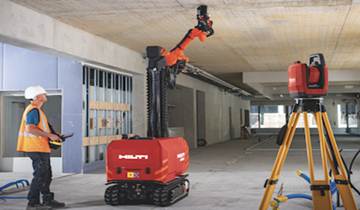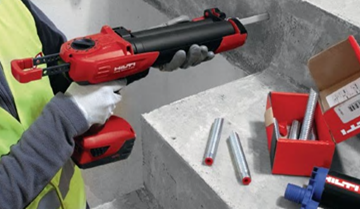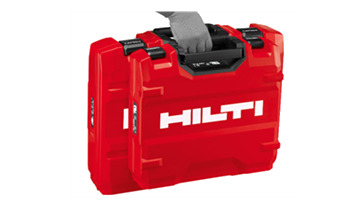ANCHORING WITH HILTI – ANCHOR INSTALLATION PROCEDURE
What you don’t know about anchors
What does cracked concrete, failed jobsite inspections
and carrying maximum loads safely all have in common? They’re related to
anchors. However, we’re not willing to compromise on the above and so we can
provide solutions to all of them to ensure a safe and efficient anchor
installation procedure.
If you work with anchors daily, you know that over-torqued and under-torqued anchors are among the most common causes of failed jobsite inspections. Independent studies have identified poor construction procedures as one of the main causes of structural failure, while the American Construction Inspector Association reveal that over-and under-torqued anchors are the number-two reason for failed jobsite inspections.
And maybe it is no wonder, when the available tools do not match the current demands. To correctly install an anchor your choices are between a slow and imprecise torque wrench, cumbersome torque bars or a powered impact wrench, which lets productivity soar while safety and reliability slump.
2. What is safeset?
SafeSet is the Hilti system for setting anchors and
post-installed rebar connections. It helps to ensure that anchors can carry
their maximum load values safely, minimizing the risk of anchor failure.
Alongside this, it’s designed to speed up the installation of anchors and rebar
connections and to make them safer and more reliable. As with our Hilti AT module, all SafeSet
components are covered by international approvals and work seamlessly as a
system.
3. eurocode standards
The demand for cracked concrete approved anchors are on the rise. This is due to the development in the new design standards wherein concrete is assumed to be cracked. This is where the Eurocode 2 part 4 can help. This new standard consolidates, updates and replaces older design guidelines and technical reports (e.g. ETAG001, EOTA TR029) for fastener design. It's intended for structural and non-structural applications in concrete and brings all aspects of fastener design together into a single standard. It defines the design and specification rules for cast-in fasteners, post-installed mechanical and bonded fasteners and anchor channels.
4. Hilti HST2 anchor and
cracked concrete
When it comes to anchors, here at Hilti we have the
right anchor for the right application. But, what’s new? We have our HST2
anchor, a premium solution with an ETA for cracked concrete and a reliable
solution with our AT module. With the changes in the Eurocode standards, the
need for awareness of proper anchor design is more essential than ever.
Therefore, as the HST2 is integrated in the SIW AT module with the adaptive
torque technology, it gives you the peace of mind for safe installation,
especially with the SafeSet reliability.
To conclude, cracked concrete or not, a safe and efficient anchor installation procedure is paramount.
more hilti news


